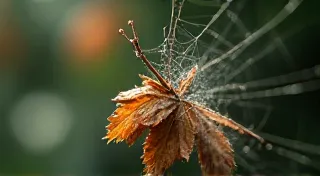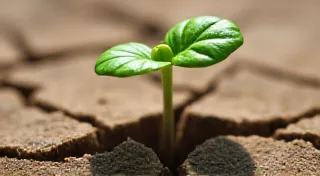Fractured Vessels, Reassembled Stories: Mending Pottery Across Time
There's a particular resonance when you hold a repaired piece of pottery. It’s more than the feel of clay and glaze; it’s the palpable weight of history, the quiet whisper of resilience. It’s a story told not just in the creation of the vessel, but in its breaking and subsequent reassembly. The practice of *kintsugi* in Japan, the art of repairing broken ceramics with gold, exemplifies this beautifully, but the sentiment – the profound appreciation for imperfection and the recognition of loss as part of a whole – extends far beyond one cultural tradition. Across regions and centuries, mending pottery isn't simply about functionality; it's a symbolic act, preserving cultural memory and offering subtle, yet powerful, insights into a region's history and values.
My own fascination began with a small, unassuming bowl I found in an antique shop years ago. Its vibrant blue glaze, once pristine, was now patched with a network of subtle, earthy-toned repairs. It wasn’t labeled, and the dealer knew little about it. Yet, that bowl, flawed and pieced back together, captivated me. It felt…older, somehow, than the other pieces surrounding it. It held a fragility and a strength that a perfect vessel simply couldn’t possess. I started researching, and that’s when I realized the depth of the cultural significance held within the simple act of mending. The meticulous craftsmanship evident in the repair suggested a tradition of skill passed down through generations, a concept echoed in many regional pottery traditions – a deeper dive into which you can find in Echoes of the Hand: The Legacy of Apprenticeship in Pottery Guilds.
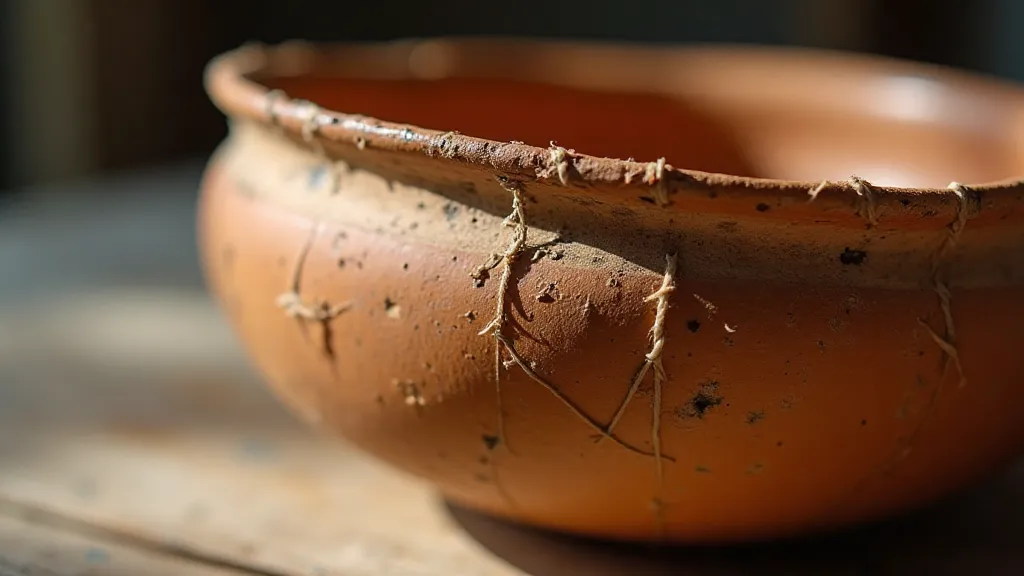
The Thread and the Resin: Techniques Across Cultures
While *kintsugi* may be the most widely known technique, pottery repair is far from a singular practice. In many parts of the world, where resources were limited and pottery held significant value – utilitarian or ceremonial – breakage wasn’t an end, but a challenge to be overcome. Roman pottery, for example, often reveals evidence of careful stitching using metal wire. Small pieces were painstakingly joined, a testament to the Roman practicality and the importance of preserving household goods. These repairs, though often crude by modern standards, speak volumes about daily life in the Roman world – a world where even shattered vessels deserved a second chance.
Moving eastward, we find examples of adhesive repairs in Persia and surrounding regions. Resins derived from plants and animals were common binding agents, creating visible seams that, over time, became part of the pottery's unique character. These repairs, often darker in color than the original glaze, subtly alter the aesthetic, adding layers of history and intrigue. The process wasn’t just about fixing the vessel; it was about acknowledging its journey. The subtle variations in repair techniques, reflecting the local materials and aesthetic preferences, also shaped the overall identity of regional pottery forms, as explored further in Slab by Slab: Constructing Identity in Regional Pottery Forms.
In Europe, particularly during the medieval and Renaissance periods, evidence suggests a combination of techniques. Metal staples were frequently used for more significant breaks, while smaller cracks were often filled with a type of resin or clay-based adhesive. The aesthetic was often less about seamlessness and more about demonstrating the pottery’s longevity and the skill of the repairer. The very act of preserving these fragile pieces speaks to the dedication to cultural heritage that continues to inform modern conservation practices.
Beyond Functionality: The Symbolic Weight of Repair
The true power of mended pottery, however, transcends its practicality. In many cultures, broken objects represent loss, hardship, and the ephemeral nature of life. Repairing a broken vessel, therefore, becomes an act of defiance against that transience. It symbolizes resilience, perseverance, and the ability to find beauty and value in imperfection. It’s a way of saying, "This may be broken, but it is not defeated."
Consider the psychological impact on a potter who has spent hours shaping and firing a piece, only to see it crack during transport or use. To simply discard it would be to acknowledge defeat. To repair it, however, is to reclaim that lost effort, to transform a symbol of failure into a testament to skill and determination. The repairer isn’t simply fixing an object; they’re restoring a sense of hope and continuity. The dedication to preserving these artifacts, sometimes at considerable effort, is also a reflection of a deeper appreciation for the cultural memory they represent, a concept that resonates strongly with the larger endeavor of preserving regional pottery collections.
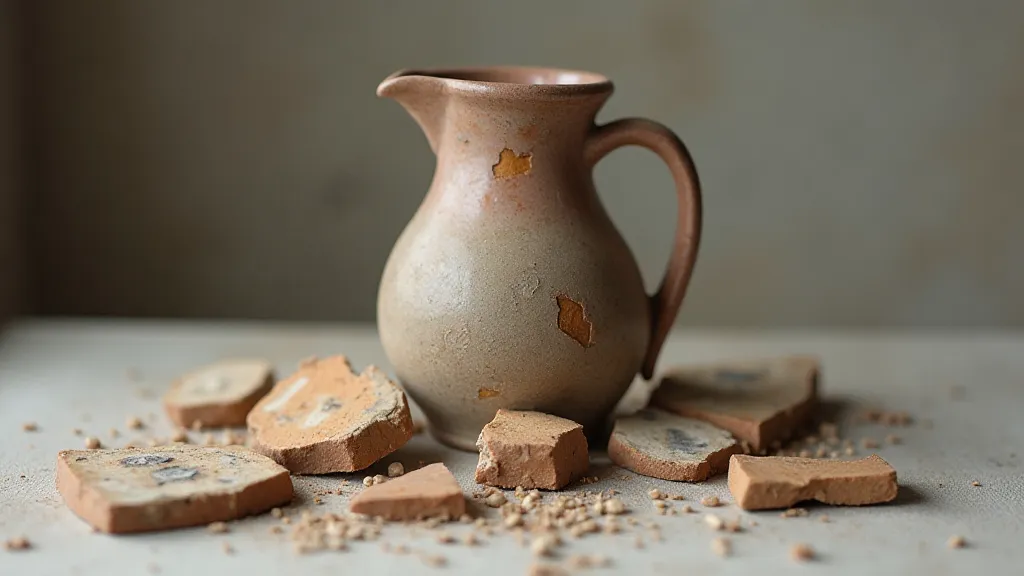
Collecting and Conservation: Appreciating the Journey
For collectors of antique pottery, the presence of repairs isn’t necessarily a negative. In fact, many actively seek out pieces with visible mending, recognizing that these imperfections offer a richer, more nuanced understanding of the object's history. A perfectly pristine vessel might be beautiful, but it lacks the depth and character of one that has survived breakage and repair. The stories embedded within these repairs – the materials used, the techniques employed, the intentions of the repairer – all contribute to a far more compelling narrative than a flawless, untouched piece ever could.
Conservation practices are also evolving. While early attempts at restoration often focused on concealing repairs, modern approaches increasingly emphasize the importance of preserving the evidence of mending. Leaving the repairs visible not only provides valuable insights into the techniques used by past repairers, but also helps to maintain the integrity of the object’s history. The goal isn’t to erase the past, but to understand and appreciate it. This thoughtful approach aligns with a broader philosophy of honoring the passage of time and the inevitable marks that it leaves on all things, a sentiment central to the principles of The Imperfect Bloom: Embracing Wabi-Sabi in Regional Ceramics.
Regional Variations and Future Studies
The study of pottery repair offers a unique window into regional cultural values and technological capabilities. Further research is needed to document these variations more comprehensively, analyzing not just the materials used for repair, but also the techniques employed and the aesthetic sensibilities that shaped the process. For example, the stark functionality of Roman repairs contrasts sharply with the more decorative approach seen in some Persian traditions. Understanding these differences can shed light on the broader cultural landscape of the time.
The oral traditions surrounding pottery repair also deserve further investigation. In many communities, the skill of mending pottery was passed down through generations, accompanied by stories and rituals that imbued the process with cultural significance. These narratives, often lost to time, offer invaluable insights into the role of pottery and its repair within the community. The meticulous records kept by pottery guilds, and the careful craftsmanship passed down through apprenticeships, also offer invaluable insights into these traditions, underscoring the importance of these skills in shaping regional identities and economies.
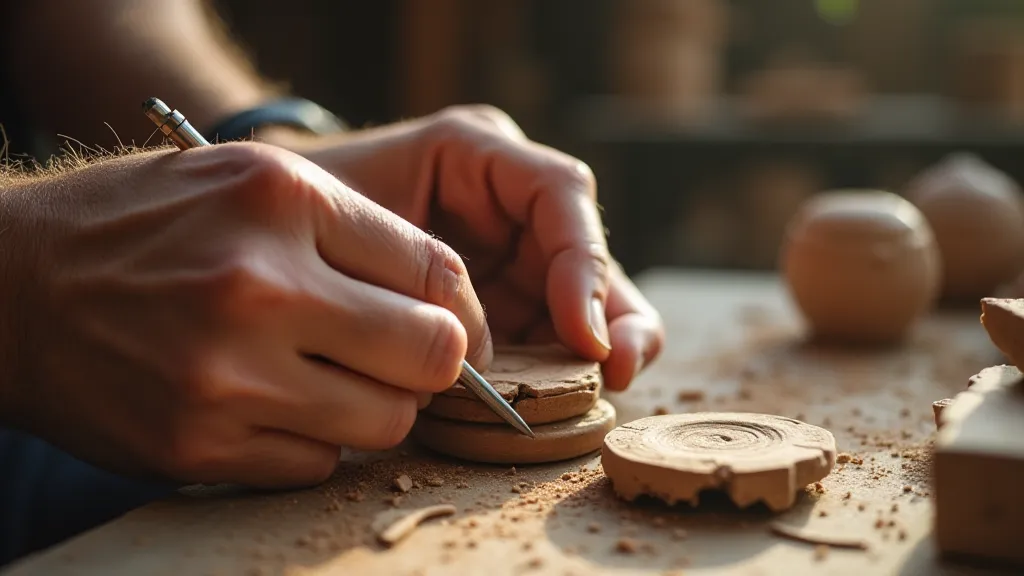
The act of collecting and preserving these repaired vessels is more than just an exercise in material conservation; it's a commitment to safeguarding a vital part of human history. These objects offer a tangible link to the past, a testament to human ingenuity and resilience. The dedication to documenting these collections also speaks to a broader commitment to preserving cultural heritage, a vital undertaking that ensures future generations can appreciate the richness and diversity of human experience. The emotional weight these objects carry is profound, evoking a sense of connection to the people who created, used, and repaired them – a legacy that transcends time and distance. Furthermore, the preservation of these collections offers a valuable opportunity to foster cross-cultural understanding, allowing us to appreciate the diverse approaches to craftsmanship and the shared human experiences that connect us all.
Ultimately, a mended piece of pottery is more than just a functional object; it’s a tangible link to the past, a testament to human resilience, and a celebration of imperfection. It’s a reminder that even when broken, we can be reassembled, strengthened, and ultimately, more beautiful than we were before. It’s a fractured vessel, yes, but also a reassembled story, a fragment of history waiting to be discovered. The ongoing research into these objects, coupled with the passionate efforts of collectors and conservators, ensures that these stories will continue to be told and appreciated for generations to come, deepening our understanding of the human experience and the enduring power of craftsmanship.




